Fantastic Experimental Products and Where to Create Them (實驗品與它們的產地) is a group exhibition of artists who work between technology, science and contemporary art. The title seems to be a play on the Harry Potter film series, with all its suggestions of light-hearted fantasy. The exhibition catalog stresses its affiliation with maker culture, a DIY movement that was termed in 2006 and has since spread worldwide. Makers typically embrace an open-source spirit and often incorporate engineering skills and traditional crafts to create new devices or modify existing ones. Maker culture has greatly influenced digital art culture by promoting systems of shared resources, laboratories, collaborations and multi-disciplinary projects. “The roads to digital art are stacked with fantasies, designs and semi-finished products from engineering implementation within their creative processes,” writes the art center. Featured artists include Sun Yi-cheng (孫以臻) and Chang Hao-shin (張顥馨), two artists who share a background in life sciences; Chen Yan-ren (陳彥任), an artist who has developed an interactive device that explores the making of digital footage; and Dimension Plus, a collective that focuses on interactive new media and interdisciplinary projects.
■ Digital Art Center (台北數位藝術中心), 180, Fuhua Rd, Taipei City (台北市福華路180號), tel: (02) 7736-0708. Open Tuesdays to Sundays from 10am to 6pm
■ Until Dec. 1
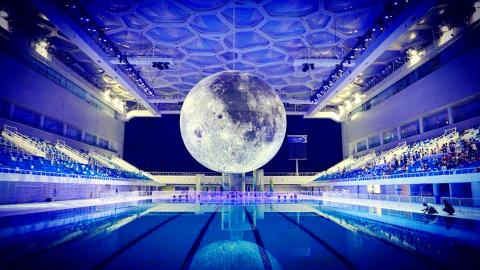
Photo Courtesy of Art Taipei
The annual art fair Art Taipei, which begins today and positions itself as a significant business platform for regional art, features 135 domestic and foreign galleries from 13 countries, presenting work from more than 450 artists, including sculptures, painting, installations, video and other forms of art media. Notable exhibitors include the debut of Italian gallery Massimo De Carlo, who will show works by Hong Kong artist Lee Kit (李傑); the Shanghai-based ShanghART Gallery will be presenting Chinese artist Chen Wei’s (陳維) photographs of urban architectural landscapes; and Taipei-based Apollo Gallery announces a promising roster of 14 Taiwanese artists including San Yu (常玉), Lee Tze-Fan (李澤藩), Lee Shih-chiao (李石樵), Kuo Hsueh-Hu (郭雪湖). The fair will also feature five thematic exhibitions that deal with new trends, institutions and a review of old masters. The show MIT: Taiwan Young Artists Connection with the World is organized in collaboration with the Ministry of Culture, giving support to a selection of emerging Taiwanese artists. Furthermore, a large-scale art installation and public art projects will also be shown at the fair.
■ Taipei World Trade Center Exhibition Hall 1 (台北世界貿易中心一館), 5, Sec 5, Xinyi Rd, Taipei City (台北市信義路五段五號), tel: (02) 2577-5601. Open today until Sunday from 11am to 7pm; Monday from 11am to 6pm
■ Today until Monday
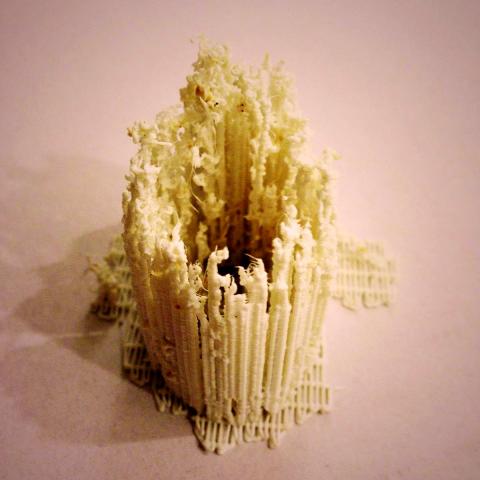
Photo Courtesy of Digital Art Center
The sixth edition of Kuandu Biennial continues its ongoing commitment to the topic of Asia, this time taking on a more institutional angle. Seven Questions for Asia (給亞洲的七個提問) is co-curated by seven curators who have each posited a question concerning “what an Asian biennial can do and cannot do,” writes Lin Hongjohn (林宏璋), the museum’s director. The questions examine geopolitics, dialects, freedom, mapping and other issues that pertain to the region. The exhibition preface begins with a discussion on the term Asia, which was first used to define an eastern land in relation to Europe. “The entity of Asia cannot do without generalization and abstraction, because in reality Asia is contestant and heterogeneous,” Lin writes. “Facing modernity and colonialism, most nation states in Asia have undergone twisted histories ... coarse democracy and uneven urbanization.” How do we address the many ideas, histories and shared concerns related to the Asia? The show responds to the above questions with a selection of artworks, projects, performances, events and a film screening. Featured projects include Korean artist Onejoon Che’s International Friendship: The Gifts from Africa, an installation that displays reproductions of gifts sent to Kim Il-sung by national leaders, figures and parties. Fiona Ta’s Disorient is a two-channel video inspired by Marco Polo’s book The Travels; the film narrative traverses through time and place, fiction and reality, and the future and beyond.
■ Kuandu Museum of Fine Arts (關渡美術館), 1 Xueyuan Rd, Taipei City (台北市學園路1號), tel: (02) 2896-1000 X 2432. Open Tuesdays to Sundays from 10am to 5pm
■ Until Jan. 6
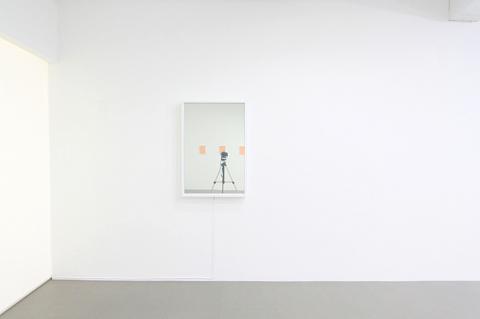
Photo Courtesy of Galerie Grand Siecle
Ding Chien-chung (丁建中) is a Taiwanese artist who creates kinetic installations, audio-visual works and installation art. Ding has a background in computer animal, interactive design and new media art. His work often utilizes light as a major component to explore the relationships between time, space, body and memory. For his solo exhibition, Da(il)ylight, at Galerie Grand Siecle, Ding presents two projects. Building on his last Taipei show in 2016, Ding seeks to “amplify the spatial perception of the viewer through the comprehensive mapping of ambient light,” writes the gallery in a press release. The conditions of sunshine, temperature and humidity contribute to the visitor’s experience of the two projects in the space. Untitled Series is a project that manipulates the drying process of ink; by setting different durations of light exposure, the dried ink creates different shades on paper. Void Series experiments with the effects of light on liquid crystal compositions by controlling the amount of illumination that passes through an object made with glass and mirrors.
■ Galerie Grand Siecle (新苑藝術), 17, Alley 51, Ln 12, Bade Rd Sec 3, Taipei City (台北市八德路三段12巷51弄17號), tel: (02) 2578-5630. Open Tuesdays to Sundays from 1pm to 6pm
■ Until Nov. 18
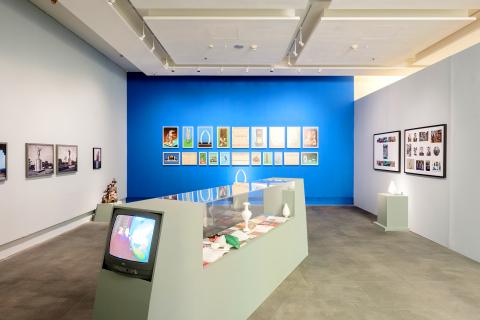
Photo Courtesy of Kuandu Museum of Fine Arts
Thierry Feuz is a Geneva-based artist known for paintings that often involve botanical-inspired elements and color abstractions. He uses a combination of acrylic and lacquer, which creates enhanced chromatic effects on the canvas. His first show in Asia currently on view at BlueRider Art presents several series of works that Feuz has developed over the years. Feuz’s paintings reflect his ongoing contemplations on human existence and natural life, writes the gallery press release. Technicolor Panorama Maverick is a series of paintings that depict repetitive horizontal lines of acrylic on canvas. These abstractions suggest a “warm, oxygenated atmosphere found above tropical seas,” writes the gallery. Perfect Night Silva and After the Rain III are two works that celebrate a vibrant landscape of colors and plant life. In addition, a six meter wide painting, Silent Winds Panorama Montage, will be shown at BlueRider Art’s fair booth at Art Taipei.
■ Bluerider Art (藍騎士藝術空間), 9F, 25-1, Renai Rd Sec 4, Taipei City (台北市仁愛路四段25-1號9樓), tel: (02) 2752-2238. Open Tuesdays to Saturdays from 9am to 6pm.
■ Until Dec. 8
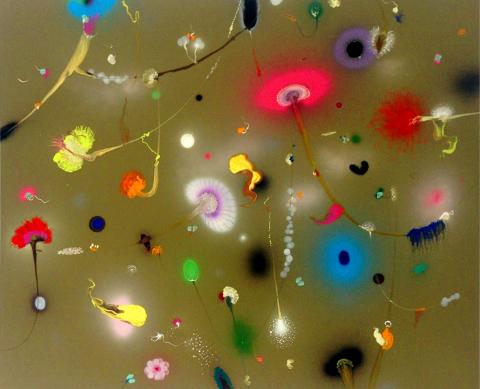
Photo Courtesy of BlueRider Art

In the March 9 edition of the Taipei Times a piece by Ninon Godefroy ran with the headine “The quiet, gentle rhythm of Taiwan.” It started with the line “Taiwan is a small, humble place. There is no Eiffel Tower, no pyramids — no singular attraction that draws the world’s attention.” I laughed out loud at that. This was out of no disrespect for the author or the piece, which made some interesting analogies and good points about how both Din Tai Fung’s and Taiwan Semiconductor Manufacturing Co’s (TSMC, 台積電) meticulous attention to detail and quality are not quite up to

April 21 to April 27 Hsieh Er’s (謝娥) political fortunes were rising fast after she got out of jail and joined the Chinese Nationalist Party (KMT) in December 1945. Not only did she hold key positions in various committees, she was elected the only woman on the Taipei City Council and headed to Nanjing in 1946 as the sole Taiwanese female representative to the National Constituent Assembly. With the support of first lady Soong May-ling (宋美齡), she started the Taipei Women’s Association and Taiwan Provincial Women’s Association, where she

Chinese Nationalist Party (KMT) Chairman Eric Chu (朱立倫) hatched a bold plan to charge forward and seize the initiative when he held a protest in front of the Taipei City Prosecutors’ Office. Though risky, because illegal, its success would help tackle at least six problems facing both himself and the KMT. What he did not see coming was Taipei Mayor Chiang Wan-an (將萬安) tripping him up out of the gate. In spite of Chu being the most consequential and successful KMT chairman since the early 2010s — arguably saving the party from financial ruin and restoring its electoral viability —

It is one of the more remarkable facts of Taiwan history that it was never occupied or claimed by any of the numerous kingdoms of southern China — Han or otherwise — that lay just across the water from it. None of their brilliant ministers ever discovered that Taiwan was a “core interest” of the state whose annexation was “inevitable.” As Paul Kua notes in an excellent monograph laying out how the Portuguese gave Taiwan the name “Formosa,” the first Europeans to express an interest in occupying Taiwan were the Spanish. Tonio Andrade in his seminal work, How Taiwan Became Chinese,